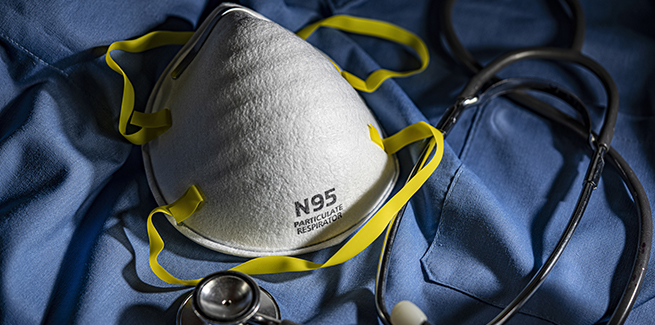Are N95 masks still hard to find (and does it matter for veterinary professionals)?

In the spring, when COVID first hit, facemasks of any type were in dangerously short supply. Not to mention controversial—experts were still arguing over their effectiveness in stopping transmission of the virus, and the US Centers for Disease Control and Prevention (CDC) was still on the fence (they didn’t come down in favor of wearing masks to prevent the spread of COVID until July).
Now, nine months into the pandemic, just about every American has a mask—if not a small collection (whether or not they wear them is another story).
But the mask you wear to the grocery store isn’t necessarily the same mask you wear in the hospital. And for a while last spring, N95 masks were the gold standard for those working in healthcare. They still are, but less so depending on the healthcare field you work in.
“The shortage of N95 masks is still a huge issue for human medicine,” Megan Ranney, MD, MPH, an associate professor of emergency medicine at Brown University, told NEWStat. Ranney is cofounder of GetUsPPE, a foundation providing free PPE to frontline workers and under-resourced communities.
“Because production has not been adequately scaled up, both acute-care hospitals and nonhospital healthcare settings continue to lack access to adequate numbers of N95s. Physicians, nurses, and other healthcare providers are being told to reuse N95s and other forms of PPE for far longer than is safe,” Ranney said.
That shortage led the CDC to implement protocols for extended mask use, which included protocols that allowed health workers to don and doff the same respirator multiple times for an extended period.
“Veterinary clinics, like human health clinics, face shortages,” Ranney said. “Although there have been no documented cases of transmission of COVID-19 from pets to people, veterinary staff are public-facing and are therefore at the same risk as other workers working in public roles.”
But as our understanding of COVID transmission has evolved, the need for N95 masks in veterinary medicine has become less critical.
NEWStat asked J. Scott Weese, DVM, DVSc, DACVIM, for his thoughts on the use of N95 masks in veterinary hospitals. A contributing reviewer of the 2018 AAHA Infection Control, Prevention, and Biosecurity Guidelines, Weese is the author of a series of in-depth guides on COVID-19 safety protocols for hospitals on behalf of the Ontario Veterinary Medical Association. All are available on his Worms & Germs COVID-19 Veterinary Resources page.
“Our guidance and the CDC’s are pretty well aligned,” Weese told NEWStat. “We recommend N95s for aerosol-generating procedures (e.g., intubation or working closely around the face of an animal who is coughing, sneezing, or panting) for patients from COVID-positive households, and [in cases] in which the animal has signs that could be consistent with COVID or is a known COVID-positive animal.”
“Reuse of N95s has been positioned as an acceptable practice and the CDC says up to five uses is fine,” Weese adds. Research is also underway to find additional ways to disinfect masks.
Regardless, Weese says a shortage of N95 masks isn’t “overly relevant” for veterinarians: “There are few indications to use N95s [in a veterinary setting], and even fewer people in practice are fit tested to properly wear them.”
But although Weese says there’s not much need for N95 masks in veterinary medicine, “I think it’s wise for every practice to have a small stash of them.”
Photo credit: © JOE CICAK/E+ via Getty Images



